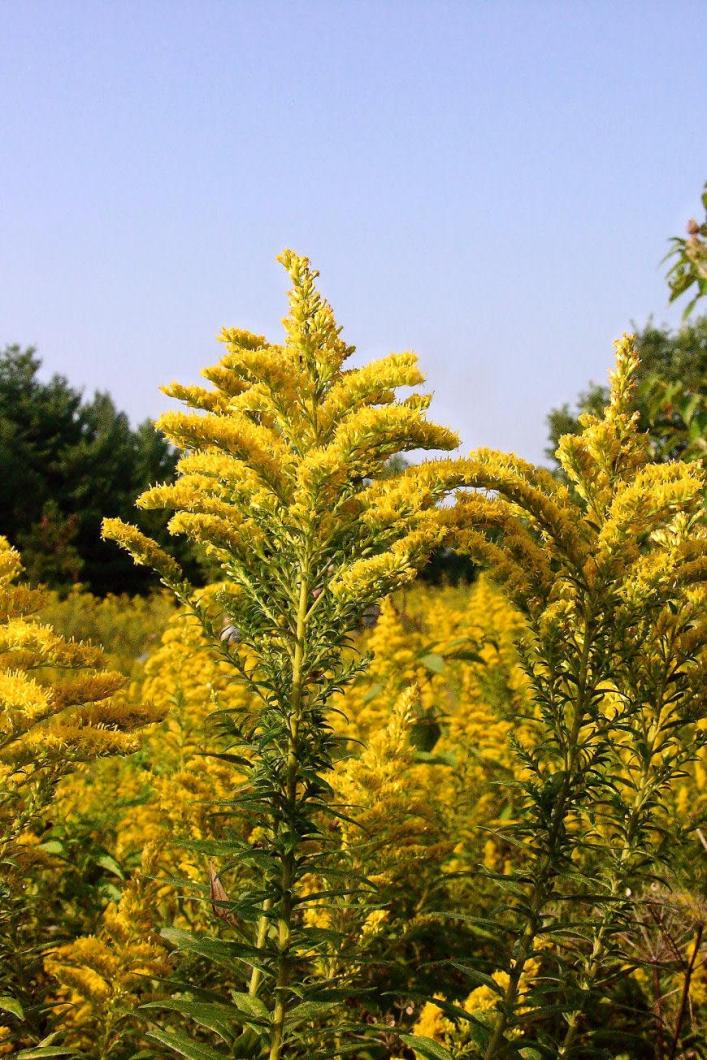Don’t spare the rod.
While I am not an advocate of corporal punishment, I am an admirer of the plentiful goldenrod blooming all over the Island.
Goldenrod has gotten a pretty bad rap from those who think that they are allergic to it, and from advertisers who try to convince us that we are all allergic to it; but in reality goldenrod deserves credit and not blame. It is in fact windborne ragweed that is responsible for most allergies and not insect-pollinated goldenrod.
Goldenrod is all good. In herbalist circles, it is valued as cure-all. Even its scientific name, Solidago, means “to make whole,” a reference to its healing capabilities.
But goldenrod “hath in times past been had in greater estimation and regard than in these dayes,” according to an herbalist named Gerard, circa 1633. His words still ring true today. He noted that, as a remedy, goldenrod was “extolled above all other herbes for the stopping of bloud in sanguinolent ulcers and bleeding wounds.” During the Crusades, goldenrod was used on the battlefields to treat fever and lessen the pain from loose teeth. And in 1788, the drinking of a goldenrod concoction over a few months allowed a boy of 10 to pass “15 large stones of gravel and 50 stones the size of a pea.” Ouch.
Not only the sickly can benefit from these blossoms of gold. Epicureans of the steeped leaf could enjoy a teatime that contained dried goldenrod. In 1816, botanist Frederick Pursh noted that “the flowers, gathered when fully expanded, and carefully dried, give a most agreeable substitute for tea, which for some time has been an article of exportation to China, where if fetches a high price.”
This favorable opinion is in contrast to the feelings of Dr. Johann Schoepf, who sniffed, “this Bohea-tea, as they call it, had been made as long as the Chinese was scarce. Our hostess praised its good taste, but this was not conspicuous in what she brewed.” If he was correct in his dislike of goldenrod tea, then perhaps the American colonists were just desperate. During the Boston Tea Party, they drank a brew made from dried goldenrod and called it Liberty Tea.
Even if this is not your cup of tea, it was Thomas Edison’s. Perhaps one of the wisest Americans of the past century, Edison had a great interest in goldenrod. He didn’t have kidney stones, nor was he looking to make a political statement; he was looking for cheap rubber. Along with Henry Ford and Harvey Firestone, he founded the Edison Botanic Research Corporation to explore the use of goldenrod to produce latex.
Their tireless efforts (no pun, Mr. Firestone) yielded a successful hybridized goldenrod that would grow up to 12 feet and produced a 12 per cent yield of latex. (Natural goldenrod only reaches heights of a few feet and has a 5 per cent latex component.) Who knew? You can still see the car with goldenrod rubber tires at the winter homesteads of Edison and Ford in Fort Myers, Fla. This gives new meaning to the term, field trip.
Closer to home, unspoiled fields and meadows on the Vineyard are golden. Think of them as the bullion at the end of summer’s rainbow; or, if that’s too much of a stretch, enjoy Walt Whitman’s description, which (like Gerard’s, above) is just as true today as when he wrote it:
“This has been and is yet a great season for wild flowers; oceans of them line the roads through the woods, border the edges of the water-runlets, grow all along the old fences, and are scatter’d in profusion over the fields.”
We should consider ourselves lucky to live in such a floral Fort Knox. It’s just a bit unfortunate for goldenrod, whose reputation seems to go through cycles. The ancient Romans had a saying that seems apt: “In pratis ut flos, sic perit omnis honos”: roughly translated, “As flowers in fields, thus perish all honors.”
Suzan Bellincampi is director of the Felix Neck Wildlife Sanctuary in Edgartown.




Comments
Comment policy »